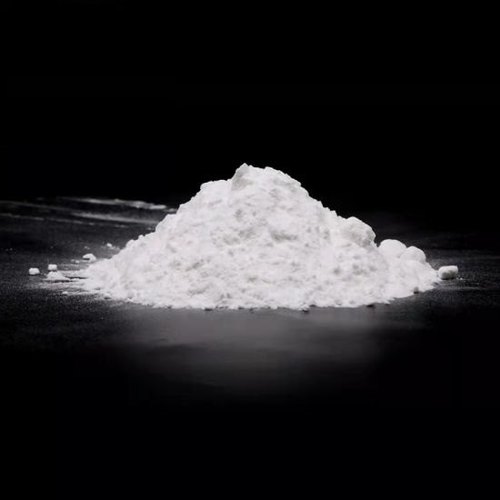How do the molecular structures differ and why does it matter? The
structural addition of two para-fluorine atoms fundamentally alters
FLModafinil's pharmacological properties compared to modafinil's
unfluorinated structure. These fluorine substitutions increase molecular
weight from 273.35 to 309.33 g/mol while dramatically enhancing
lipophilicity (better membrane penetration), metabolic stability
(resistance to breakdown), and blood-brain barrier penetration (superior
CNS access). The fluorination provides resistance to oxidative
metabolism through strong carbon-fluorine bonds—among the strongest in
organic chemistry—potentially explaining the extended duration despite
similar elimination half-lives. This isn't just academic chemistry;
these structural changes theoretically mean lower doses achieve
equivalent effects, less frequent dosing maintains coverage, and fewer
drug interactions create safety concerns.
|
Property
|
FLModafinil
|
Modafinil
|
|
Molecular Formula
|
C₁₅H₁₃F₂NO₂S |
C₁₅H₁₅NO₂S |
|
Molecular Weight
|
309.33 g/mol |
273.35 g/mol |
|
DAT Affinity (S-enantiomer)
|
Ki = 2,970 nM
|
Ki = 5,480 nM (armodafinil)
|
|
Wakefulness Duration
|
151 min (64 mg/kg)
|
110 min (150 mg/kg) |
|
Estimated Potency
|
2-3x modafinil
|
Baseline (1x) |
|
CYP Enzyme Induction
|
None |
Yes (CYP3A4/5, 1A2, 2B6)
|
|
Contraceptive Interaction
|
Likely none |
Yes (18-32% reduction)
|
|
Recovery Sleep Debt
|
2 time intervals
|
9 time intervals |
|
FDA Approval
|
None |
Yes (1998) |
|
Human Safety Data
|
Zero published trials
|
25+ years, thousands of studies
|
|
Clinical Development Status
|
Discontinued (most indications)
|
Active use, generic available
|
|
Regulatory Status
|
Unregulated research chemical
|
Schedule IV controlled substance
|
|
Quality Control
|
None (grey market)
|
FDA/EMA pharmaceutical standards
|
What's the actual potency difference in practice? Patent literature
claims FLModafinil is "4 times more effective than modafinil" and "20
times more effective than adrafinil," but these marketing claims lack
rigorous validation. Dopamine transporter binding affinities show the
S-enantiomer of FLModafinil (Ki = 2,970 nM) demonstrates approximately
1.8-fold higher affinity than armodafinil (Ki = 5,480 nM), while racemic
FLModafinil (Ki = 4,090 nM) shows similar affinity to racemic modafinil.
The head-to-head wakefulness study found 64 mg/kg FLModafinil produced
38% longer wakefulness than 150 mg/kg modafinil—a 2.3-fold dose
difference suggesting approximately 2-3 times greater potency in this
animal model. Anecdotal human reports suggest 50-100 mg FLModafinil
equates to 200 mg modafinil, implying 2-4 fold potency, though these
lack clinical validation and could reflect placebo effects or vendor
mislabeling.
How do the side effect profiles actually compare? Modafinil's safety
database includes 25+ years of clinical use, extensive Phase III trials,
post-marketing surveillance, and comprehensive adverse event
characterization. We know exactly what to expect: headache in about 20%,
insomnia in 27%, decreased appetite in 16%, with rare but serious risks
of Stevens-Johnson Syndrome, psychiatric destabilization, and
cardiovascular events. In stark contrast, FLModafinil has zero published
human safety data—we don't know if it produces similar, fewer, or
entirely different side effects. Anecdotal reports claim fewer side
effects, particularly less headache and anxiety, and animal data shows
less sleep architecture disruption. However, these sources lack the
rigor of controlled clinical trials with systematic adverse event
monitoring. The discontinuation of clinical development for multiple
indications despite promising preclinical profiles suggests either
safety concerns or insufficient efficacy emerged in unreported human
testing, which should concern anyone considering grey-market use.
Why does research status determine which compound to actually use? This
proves decisive for clinical utility. Modafinil received FDA approval in
1998 for narcolepsy, subsequently expanding to shift work sleep disorder
and obstructive sleep apnea, maintaining Schedule IV controlled
substance status reflecting low abuse potential. The extensive database
includes thousands of studies across multiple indications,
well-characterized pharmacokinetics, established dosing regimens
(100-400 mg daily), and comprehensive safety monitoring. Generic
availability makes it affordable and accessible worldwide—you're looking
at established, regulated pharmaceutical products with guaranteed purity
and consistent dosing.
What's FLModafinil's developmental trajectory told us? FLModafinil
exists in pharmaceutical limbo. Originally patented by Lafon
Laboratories in 1984-1986 (US Patent 4,489,095; CA Patent 1,199,916), it
was re-patented in 2013 (US Patent 9,637,447B2) by NLS Pharmaceutics for
indications including narcolepsy, ADHD, Alzheimer's disease, chronic
fatigue syndrome, and idiopathic hypersomnia. Phase I trials allegedly
began in 2015 for Alzheimer's disease but were discontinued in late 2019
without published results or disclosed reasons. As of January 2024,
development has been discontinued for narcolepsy, ADHD, and Alzheimer's
disease, with only chronic fatigue syndrome remaining in preclinical
stages. The compound has no FDA approval, no EMA approval, and no
approved indications globally. It exists as an unregulated "research
chemical" in legal grey areas, sold by vendors without quality control
or purity standards, making safety and authenticity highly variable. The
corporate struggles of NLS Pharmaceutics—stock down ~90% in 2024,
1-for-10 reverse stock split in October 2025, merged with Kadimastem
Ltd. and renamed NewcelX Ltd.—provide critical context for why
development has stalled despite promising preclinical data.
What's the bottom line for choosing between them? The comparison yields
a clear conclusion: modafinil remains the evidence-based choice for any
legitimate medical indication. Its extensive safety database, FDA
approval, established dosing, affordable generic availability, and 25+
years of clinical experience provide confidence in benefit-risk profile.
FLModafinil represents a high-risk experimental compound with promising
preclinical pharmacology but alarming developmental red flags. The
systematic discontinuation of clinical programs despite theoretical
advantages over modafinil suggests undisclosed problems emerged during
human testing. Without published safety data, quality control standards,
or regulatory oversight, FLModafinil use constitutes human
experimentation with unpredictable risks. For researchers, FLModafinil
presents intriguing pharmacological innovations—longer duration, no CYP
induction, potentially superior wakefulness promotion with less sleep
debt accumulation. However, until controlled trials establish human
safety and efficacy profiles, clinical use cannot be justified given
modafinil's proven track record. If you're looking for evidence-based
cognitive enhancement with proper research backing, explore our
safe beginner nootropic stack guide
with tested compounds and dosing protocols.


